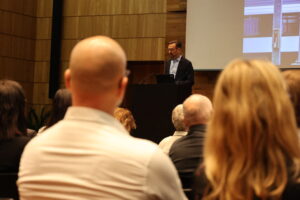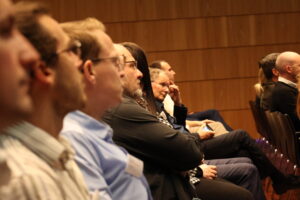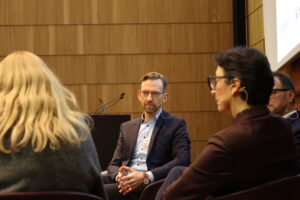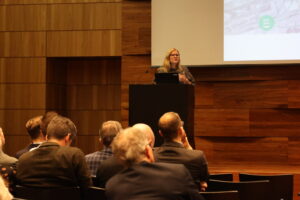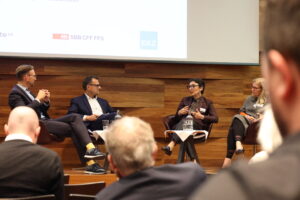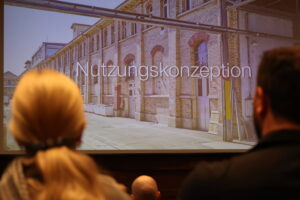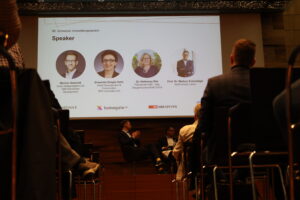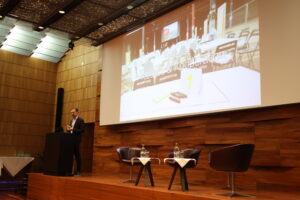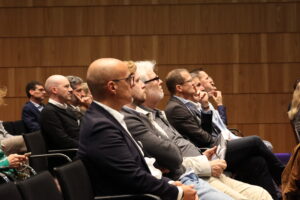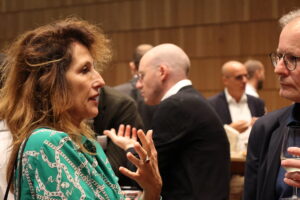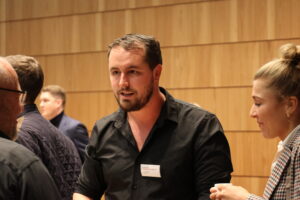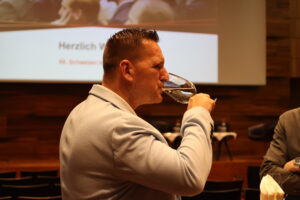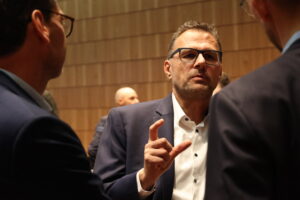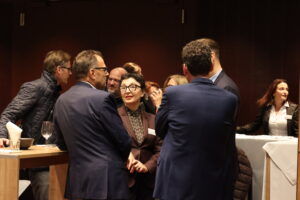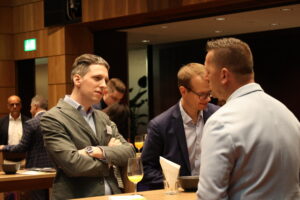Review 88th Swiss Real Estate Talk
Wherever cities and communities grow, new neighborhoods are also created. But developers do not always succeed in breathing life into them. The question of how to transform new neighborhoods into vibrant centers was explored at the 88th Swiss Real Estate Forum under the title "Baukultur - Lebenskultur: Wie lebenswerte Quartiere entstehen" (Building culture - living culture: How to create livable neighborhoods).
"How do developers of such neighborhoods succeed in creating places where people feel comfortable?" Schmidiger wanted to know from his first guest. Markus Siemienik, Head of Investment Properties East at SBB Immobilien Development, had a clear answer: "With building culture, a good mix, attention and exchange." He said that SBB in particular, whose stations are located in settlement centers, has a great interest in linking the good infrastructure and its own properties in such a way that livable places are created.
To this end, SBB has developed a standardized procedure for all properties costing more than CHF 5 million. Siemienik emphasized three important aspects of this six-stage process: "We want to involve the local population as early as possible. In addition, the cooperation should be based on partnership, and we create qualified procedures with test planning."
When developing new properties, SBB pays particular attention to existing buildings. This must be preserved, says Siemienik. He cites SBB's "Werkstadt Zürich" site as an example. Over the next few years, a lively area for work and leisure is to be created on the 42,000-square-meter site, which will grow together with the adjacent neighborhoods to form a new urban space. To this end, SBB wants to exploit the synergy between the identity-creating, historic building fabric, the public use of the outdoor spaces, and the possible structural densification to create an attractive place for culture, commercial and industrial innovation businesses, and start-up companies.
Quarters with Third Places
Swiss Prime Site is pursuing very similar goals, as Drazenka Dragila Salis, Head of Development and Construction at Swiss Prime Site Immobilien AG (SPS), explained using the example of the "Maaglive" project, which is to take shape on the Maag site at Hardbrücke station in Zurich West, which has currently been dominated by office uses. "Diversification of use is important to us." Living and working should be just as possible on the site as culture and gastronomy. After all, "The trend is toward living between home and work, so-called third places," Drazenka Dragila Salis continued. In order to revitalize the area, SPS is relying on public-intensive first floor uses. At the same time, the uses are to be better distributed over the course of the day, week and year. A diverse range of outdoor and open spaces offers an optimal prerequisite for this; among other things, a square with around 80 high-stemmed trees, an "urban forest," is to contribute to heat reduction in the future together with other green spaces and ensure a pleasant microclimate. In addition, the opening up of the neighborhood is planned, among other things through new pedestrian and bicycle paths. In the view of Drazenka Dragila Salis, the spatial proximity of Third Places to places where people work or live and which can be reached quickly on foot is ideal.
Looking beyond your own construction field
The Allgemeine Baugenossenschaft Zürich (ABZ) is also committed to creating lively and livable neighborhoods. "What do you do differently?" moderator Schmidiger wanted to know from Nathanea Elte, President of ABZ. "We bake smaller rolls," was her prompt reply. But the building cooperative's principles for creating a lively neighborhood are similar to those of SBB and SPS. The cooperative relies equally on the active co-design of the outdoor spaces and common areas, but also offers support for this. Elte presented the new Entlisberg 2 replacement building as a prime example. With community rooms, an after-school care center for children and above-ground laundries that are to function as meeting places, life is being breathed into the neighborhood.
The Koch site is also to become a neighborhood. The ABZ has been granted building rights for one of the building plots on the site. Together with the other developers, the ABZ wants to look beyond its own building site. "The aim is for demand-based project development to result in a customized and sustainable concept that is adapted to the location, broadly anchored and embedded in the wider neighborhood," says Elte. To achieve this, it is necessary to look at what is already there and what can be added. In continuation of the area's recent history of use, the ultimate goal is to create a place of life and culture that is open to all, with concerts, exhibitions and off-spaces.
"Is it possible to build living sites at all, or don't they have to grow over time, more like 'Mrs. Gerold's garden'?" moderator Markus Schmidiger wanted to know from his guests in the subsequent discussion round. It is important to provide community and opportunity spaces, said Nathanea Elte. People should feel that they can try something out. But retreat opportunities are just as important.
"Life is improvised," says Markus Siemienik of SBB, "which is difficult for investors who prefer it organized." Participation of future residents, for example, in how a community space will be used, is essential for later success, he says. Drazenka Dragila Salis also believes that involving tenants at an early stage is an important means to a revitalized neighborhood.
The 89. real estate talk will take place on November 15, 2022.







